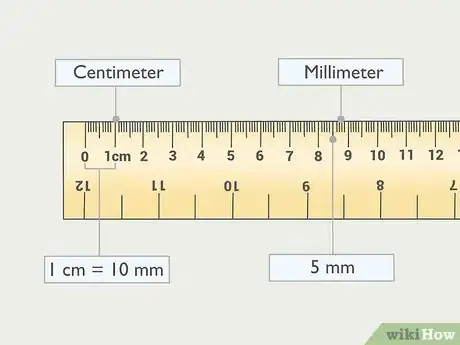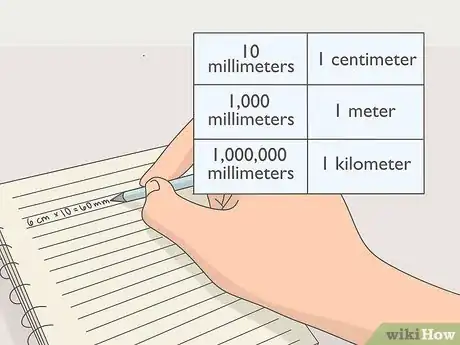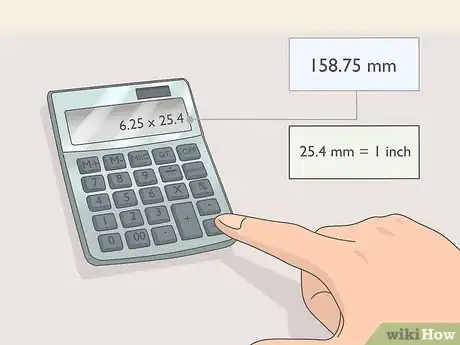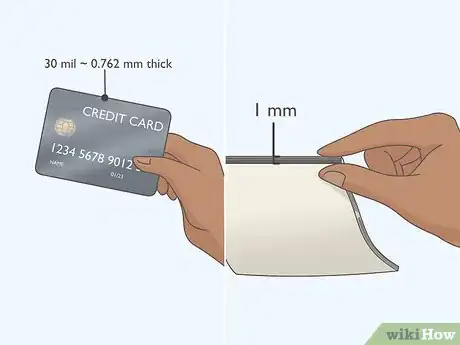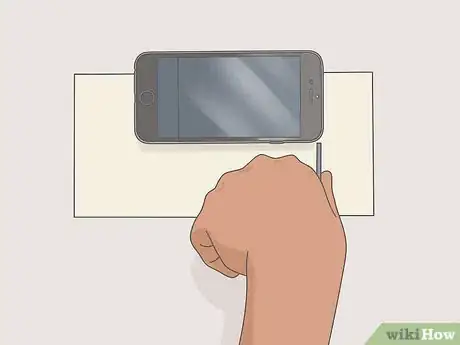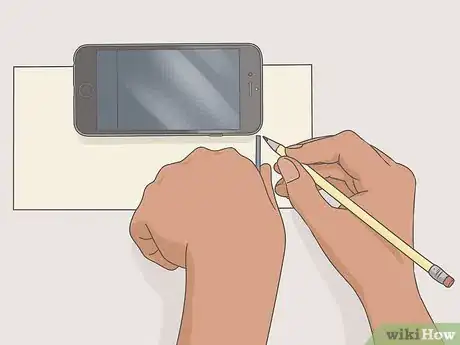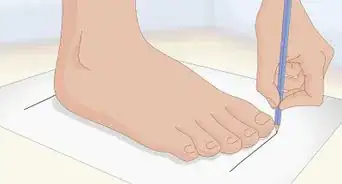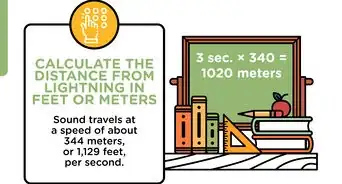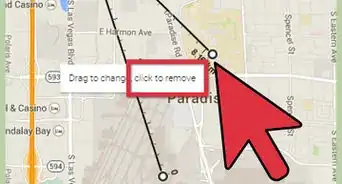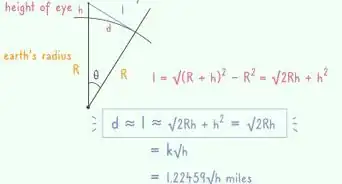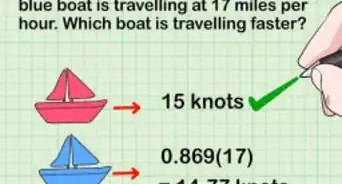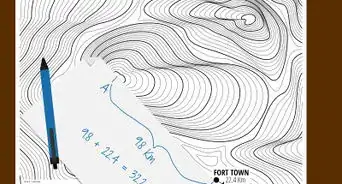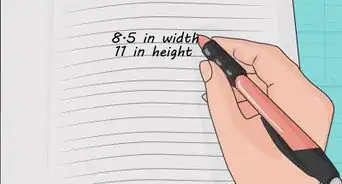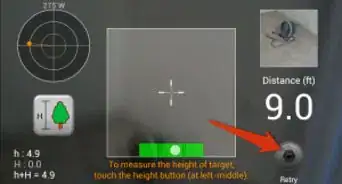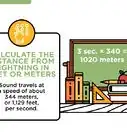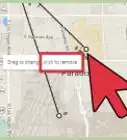This article was co-authored by wikiHow Staff. Our trained team of editors and researchers validate articles for accuracy and comprehensiveness. wikiHow's Content Management Team carefully monitors the work from our editorial staff to ensure that each article is backed by trusted research and meets our high quality standards.
There are 12 references cited in this article, which can be found at the bottom of the page.
This article has been viewed 327,678 times.
Learn more...
A millimeter (or millimetre) is a unit of length used to make standardized measurements as part of the metric system. One millimeter is one one-thousandth of a meter. There are a couple ways to measure millimeters. The first and simplest method is to use a metric ruler, which is conveniently labeled with millimeter markings. The second is to use basic math to convert another unit of measurement, such as centimeters, kilometers, inches, or yards, into millimeters.
Steps
Using a Metric Ruler
-
1Look at the unmarked lines on a metric ruler. There are 2 separate units of measurements on a standard metric ruler—centimeters and millimeters. The numbered lines correspond to centimeters, while the unmarked lines indicate millimeters. If you look closely, you’ll notice that there are 10 millimeters in a centimeter.[1]
- The medium-sized line at the halfway point between each numbered centimeter measurement represents half a centimeter, or 5 millimeters.[2]
- This same labeling scheme is also used on longer metric measuring tools, such as meter sticks and tape measures.
-
2Line up the end of your ruler with the object you want to measure. More specifically, place the line marked “0” up against the far edge of your object. Make sure the ruler is straight and neatly aligned with your starting point.[3]
- If you’re trying to find out how long your smartphone is in millimeters, you would arrange your ruler so that the “0” marking is even with one of the device’s horizontal edges.
- Not all rulers have “0”s printed on them. If the one you’re using doesn’t, it’s safe to assume that the end of the ruler to the left of the “1” indicates “0mm.”
Advertisement -
3Multiply the centimeter measurement just before the end of your object by 10. Note the number of the last full centimeter measurement. Multiplying this number by 10 will convert the unit of measurement to millimeters and tell you how long your object is in millimeters up to this point.[4]
- If the last full centimeter measurement reads 1, multiplying it by 10 would give you 10, since 1cm = 10mm.
Tip: One quick and easy way to multiply by 10 when you’re working with integers (whole numbers) is to simply tack a “0” onto the end of the number.[5]
-
4Add the number of lines after the last centimeter mark. Now, count up how many unmarked lines there are beyond the end of your object. The reason this is necessary is because there aren’t enough millimeters to account for another full centimeter. Using the centimeter measurement to quickly calculate the bulk of the object’s length in millimeters just saves time.[6]
- If the object you're measuring is 1.5 centimeters, multiplying 1 times 10 gives you 10, and adding 5 gives you a total length of 15mm.
- If it’s easier for you, you can also measure one centimeter past the end of your object and then subtract the number of millimeters in between. 2 centimeters (20 millimeters) minus 5 millimeters equals 15mm.
Converting Other Measurements
-
1Learn how other metric measurements work to easily calculate millimeters. As you’ve seen, there are 10 millimeters in a centimeter. Similarly, there are 1,000 millimeters in a meter and 1,000,000 millimeters in a kilometer, which is 1,000 meters. Once you understand the math, converting other metric measurements to millimeters is a relatively simple task.[7]
- The prefix “centi” means “hundred,” signifying that a centimeter is one hundredth of a meter. By the same token, “milli” mean “thousand,” so a millimeter is one thousandth of a meter.
-
2Multiply inch measurements by 25.4 to find their length in millimeters. You may need a calculator for this one. Start by entering your inch measurement up to 2 decimal places (as in “6.25”). Then, hit the “x” button and punch in “25.4,” as there are roughly 25.4 millimeters in 1 inch. When you hit the “=” button, the number you get will be the same measurement, only in millimeters.[8]
- Using the formula described above, 6.25 inches is equal to 158.75 millimeters.
- Translating inches to millimeters is a little tougher than making other conversions, since inches are imperial units and millimeters are metric.[9]
Tip: It should be fine to limit your final measurement to the numbers on the left side of the decimal point. If you need to be extra precise, round off to the nearest hundredth of a millimeter (the second number after the decimal).
-
3Multiply measurements given in feet by 304.8. The idea here is the same as converting inches to millimeters. There are approximately 304.8 millimeters in an imperial foot, so multiplying the total number of feet by 304.8 will help you determine how long it is using the smallest metric unit of measurement.[10]
- If you’re 5 feet tall, you would be 1,524 millimeters tall. That sounds a lot more impressive!
-
4Use a conversion factor of 914.4 to get millimeters from yards. Nothing new here. 1 yard is equal to about 914.4 millimeters. As a result, multiplying a yard measurement by 914.4 will instantly turn it into a millimeter measurement.[11]
- The same basic principle that makes it possible to convert inches and feet to millimeters also applies here. There are 12 inches in 1 foot, so 12 x 25.4 = 304.8; a yard has 3 feet, so 304.8 x 3 = 914.4, and so on.
- It’s well known that the field of play on an American football field is 100 yards. What many might not know is that this amounts to a whopping 91,440 millimeters. Imagine trying to measure that out with a ruler![12]
Estimating Millimeters with a Credit Card
-
1Grab a normal credit card. Most credit cards (and other types of plastic cards) have a thickness of 30 mil, which comes out to around 0.76 millimeters (0.762 mm, to be exact). It isn’t the most exact measuring tool, but it may be close enough for tasks that require you to have a rough idea of how something measures up in millimeters.[13]
- If you don’t have a credit card handy, stack 10 sheets of 8 1⁄2 in (22 cm) x 11 in (28 cm) printer paper on top of each other to get a layer that’s about 1 millimeter thick. This may be harder to work with than a single plastic card, though.
- A “mil” is a little-used imperial unit that corresponds to one thousandth of an inch, and is not to be confused with millimeters.[14]
Warning: Since this method isn’t very exact, you shouldn’t rely on it when the precision of the measurements you’re taking are important.
-
2Stand the card up on a piece of paper beside the object you’re measuring. Align the outer edge of the card with your chosen starting point on the object. Imagine that the card is a ruler, and that the edge is the 0mm line.
- For this method, you’ll essentially be adding up 1 millimeter at a time in order to find the one of the object’s given dimensions.
-
3Use a pen or pencil to draw a thin line along the inner edge of the card. Run the tip of your writing utensil down the card to trace a line long enough to be plainly visible. This marks a distance of 0.762 millimeters between the end of the object and your first line.
- You’ll be drawing a number of lines quite close together, so use light pressure to make the line as thin as possible. Sharpening your pencil or using a pen with an ultra-fine point will help.
-
4Slide the card down to the other side of the line and repeat the process. This line will be 1.52 millimeters from your starting point. Reset your card on the far edge of your second line and draw another. Continue measuring and marking in small increments until you reach the end of the object, then count up the number of individual spaces.
- Make sure you count the spaces between the lines and not the lines themselves, since there will be 1 too many.
- To increase your precision a bit, count every 4 lines as 3 millimeters total. This will help make up the difference, since the card isn’t exactly 1mm thick.
Community Q&A
-
QuestionHow do I convert inches to centimeters and to millimeters?
 DonaganTop AnswererMultiply inches by 2.54 to get centimeters. Multiply inches by 25.4 to get millimeters.
DonaganTop AnswererMultiply inches by 2.54 to get centimeters. Multiply inches by 25.4 to get millimeters. -
QuestionHow do I measure liquid in milligrams?
 DonaganTop AnswererMilligrams are measured by a weight scale. First weigh an empty container. Then put the liquid into the container, and weigh it again. Subtract the weight of the empty container from the weight of the container with the liquid in it. That gives you the weight of the liquid.
DonaganTop AnswererMilligrams are measured by a weight scale. First weigh an empty container. Then put the liquid into the container, and weigh it again. Subtract the weight of the empty container from the weight of the container with the liquid in it. That gives you the weight of the liquid. -
QuestionHow do I convert 481 x 931 mm into inches?
 DonaganTop Answerer(481 mm)(931 mm) = (481 x 0.03937 in)(931 x 0.03937 in) = (18.94 in)(36.65 in) = 694.15 sq in.
DonaganTop Answerer(481 mm)(931 mm) = (481 x 0.03937 in)(931 x 0.03937 in) = (18.94 in)(36.65 in) = 694.15 sq in.
References
- ↑ https://www.inchcalculator.com/how-to-read-a-ruler/
- ↑ https://virtualnerd.com/middle-math/measurement/metric-system/measure-ruler-millimeters
- ↑ https://virtualnerd.com/middle-math/measurement/metric-system/measure-ruler-millimeters
- ↑ https://sciencing.com/count-millimeters-ruler-8398877.html
- ↑ https://www.youtube.com/watch?v=bSwt3jPnz40&feature=youtu.be&t=238
- ↑ https://sciencing.com/count-millimeters-ruler-8398877.html
- ↑ http://www.montereyinstitute.org/courses/DevelopmentalMath/COURSE_TEXT_RESOURCE/U06_L2_T1_text_final.html
- ↑ https://www.engineeringtoolbox.com/inches-mm-conversion-d_751.html
- ↑ https://www.interexchange.org/articles/career-training-usa/2012/05/24/imperial-vs-metric-system/
- ↑ https://www.unitconverters.net/length/feet-to-mm.htm
- ↑ https://www.mathway.com/examples/basic-math/unit-conversions/converting-yards-to-millimeters?id=657
- ↑ https://www.convertunits.com/from/mm/to/football+field+[U.S.]
- ↑ https://www.youtube.com/watch?v=mqV7365hU6k&feature=youtu.be&t=5
- ↑ https://www.aqua-calc.com/what-is/length/mil
About This Article
To easiest by to measure millimeters is with a metric ruler or meter stick. If you have a metric ruler, note that the numbered lines represent centimeters and the unmarked lines represent millimeters. One centimeter is equal to 10 millimeters. Put the zero end of the ruler at the starting edge and count the unnumbered lines after the last numbered mark. Then, add the values together. So if you measured 1 centimeter and 5 millimeters, you’d get 15 millimeters total. To learn how to estimate millimeters, keep reading!
